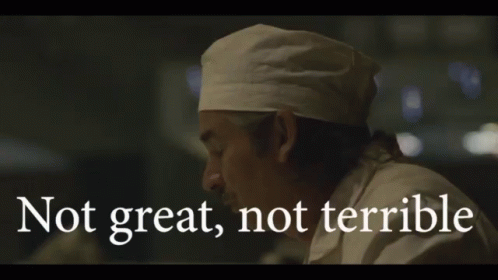5 for me, don't understand the hype really.
Backloaded, backloaded, super-backloaded.
18 km TT. Lago Laceno, Gran Sasso.. but very little happening on Gran Sasso, everybody within a minute normally. If it was the 2022 group riding up there it would be way more boring than Blockhaus this year. The stage in itself there actually was good, interesting, it's just that we then got to see 3 guys that couldn't get rid of each other (exchange Hindley for Bardet later) until the Fedaia that makes it look "boring" in retrospect.
Second TT, good.
Then finally on stage 13 the first real mountain stage. Actually all 4 mountain stages are nice, but all have problems. Crans Montana, the problem is Crans Montana. Finish in the valley, for all I care in Sierre after 20+km flat, better in Sion of course, and we get a race on the Croix de Coeur, which is an exciting addition. Like this being the first real mountain stage, it will all be Crans Montana, most likely. Of course if a strong time trialer is dropped on the Croix de Coeur, Evenepoel, Almeida, Roglic, Thomas, whoever, then the front might ride. But with the next climb coming, no helpers, might wait... Too scared of giving too much.
Bergamo stage might be interesting, but chances are it's not GC.
Bondone nice, but again will be all on the final climb
Zoldo nice, Cibiana looks very nice too, here something early might happen, some will have to try early, but of course with the first of the 2 finishing climbs being almost 10% waiting for that seems possible too.
Tre Cime, nice, but by having Tre Cime at the end, and the MTT a day after you invite everybody to wait for the final climb again. I really prefer Fedaia-Pordoi (and miss it, it's been decades?) to Giau-Tre Cime. Or Giau downhill finish in Cortina. Or Giau back up the Falzarego and finish on Pordoi from the other side, anyway, make Giau the focal point of the stage. Of course Tre Cime is nice too, but again, it invites the riders to wait.
All these 4 stages are actually nice, but I doubt we will see much early action on the first 2 ones, on the latter 2 more likely, but not sure either.
The MTT is a bit weird, thought an idiocy at first, but on the other hand, why not, even if it sort of castrates Tre Cime a bit.
The big big problem is how backloaded this all is. Very little except the TTs will happen until Crans.
And what makes it worse, is what could have been. Finish in Rome? Do a Monte Petrano queen stage the day before. Go north faster, reach Crans by stage 11, Cut Bondone or Zoldo, otherwise too many mountain stages, head south, one flat stage after the MTT, then either transfer or cross the Po plain and finish with a hilly classic type arrival, then do the Petrano stage that Zomegnan had in 09. Really the only good thing Zomegnan brought to the Giro IMO...
So a 5, too backloaded, the 4 very nice mountain stages in the end in this combination just not that great, and the big miss with Petrano. (Of course another mountain stage directly after Crans, would be better, too, 13-14 mountain, then cut Bondone and do Zoldo-Tre Cime-MTT. But no, has to be extremely backloaded. Stupid.






